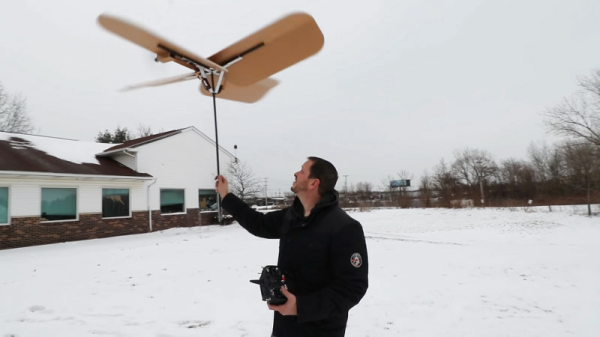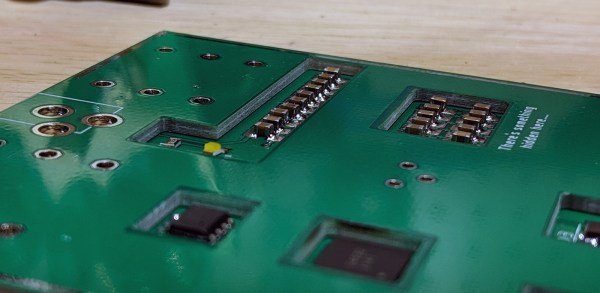In the days during and immediately after World War II, aerospace research was a forefront consideration for national security. All manner of wild designs were explored as nation states attempted to gain the upper hand in the struggle for survival. The Hiller Hornet was one such craft built during this time – a helicopter which drove the rotor through tip-mounted ramjets. Unsurprisingly, this configuration had plenty of drawbacks which prevented it from ever reaching full production. The team at [FliteTest] had a soft spot for the craft, however, and used it to inspire their latest radio controlled experiment.
Initial experiments consisted of a modified foam wing from a model seaplane, with two left wings facing opposite directions, and joined in the middle. Two motors and props were fitted to the wings to provide rotational motion. After some initial vibration issues were solved, the improvised craft generated barely enough lift to get off the ground. Other problems were faced with centripetal forces tearing the propellers off the wing due to the high rotational speeds involved.
A second attempt started from scratch, with a four wing setup being used, with much higher camber, with the intention to generate more lift with a more aggressive airfoil, allowing rotational speeds to be decreased. The craft was capable of getting off the ground, but instabilities likened to the pendulum rocket fallacy prevented any major gain in altitude.
We’d love to see a redesign to solve some of the issues and allow the craft to sail higher into the air. If you think you know the solution to the whirly bird’s dynamic problems, be sure to let us know in the comments. It should be possible, as we’ve seen successful designs inspired by maple seeds before. Video after the break.
[Thanks to Baldpower for the tip!]















